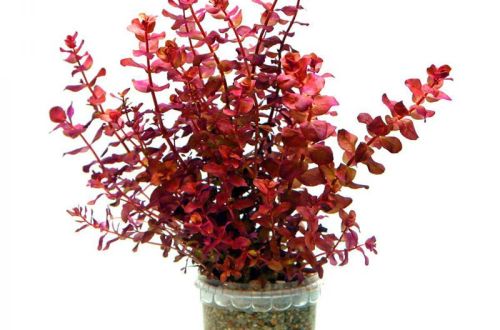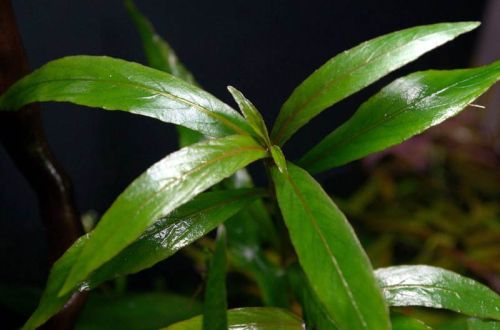
Philanthus buoyant
Phylanthus buoyant, scientific name Phyllanthus fluitans. The plant is native to tropical South America. It grows in the river systems of the Amazon basin on the territory of the modern states of Brazil and Peru.
Grows on the surface of water or on moist clay substrates. In both cases, it forms sprouts with a small inconspicuous stem 5–15 cm long and rounded leaves (1–2 cm in diameter) with short petioles. The leaf blade is covered with tiny hairs that give water-repellent properties. The color of the leaves can vary from green to brownish red. The root system is a bundle of roots emanating from the base of the attachment of the petiole to the stem. In favorable conditions, tiny white flowers appear in the axils of the leaves.
With green leaves, it resembles Salvinia eared, but unlike it, it has one leaf for each whorl.
Used as a floating plant in aquariums. Its hanging tufts of roots make a great hiding place for small fish and shrimp.
Phylanthus buoyant has special requirements for growing conditions depending on the lighting. In moderate light, soft slightly acidic water is needed. In intense light conditions (e.g. direct sunlight), high values of total hardness and increased concentrations of dissolved substances, in particular the trace element iron, are preferred. Light and iron are key factors responsible for the red color of leaves, stems and roots. Additional introduction of carbon dioxide is not required.





